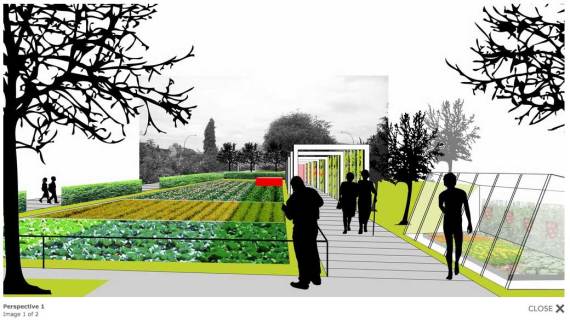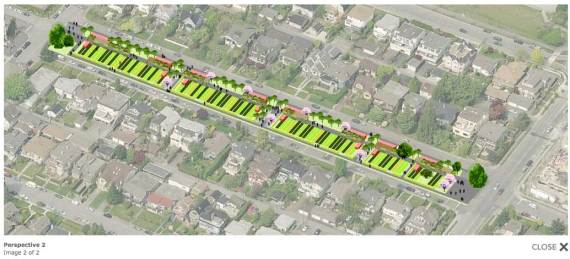North Vancouver and Edible Boulevards

The City of North Vancouver is considering an innovative plan proposed by the Green Skins Lab of the University of British Columbia to create edible boulevards. The idea is to combine commercial vegetable farms with social spaces within the city. Some features include biointensive farming, on-site energy generation and rainwater harvesting.
Like many cities, North Vancouver zoning currently prohibits commercial farming within city limits. However, the city government is reconsidering this industrial age policy as part of its 100 year sustainability plan. It is an interesting mix of food production, small business and job creation, community space, and aesthetic improvement.

See also:
The Shrinking Cities International Research Network™
The Shrinking Cities International Research Network (SCiRN™) is a worldwide research consortium of scholars and experts from various institutions pursuing research on shrinking cities in a global context. SCiRN’s mission is to advance international understanding and promote scholarship about population decrease in urban regions and urban decline, causes, manifestations, spatial variations, and effectiveness of policies and planning interventions to stave off decline.SCiRN™ was founded 2004 under the aegis of the Institute of Urban and Regional Development at the University of California, Berkeley. Here, scholars from various countries realized that although the decline of cities and urban regions was a common issue for urban planners in different local contexts, there was little comparative research on this topic.
The work being developed by the network since 2004 includes case studies of suburbs, cities, towns, and regions that are investigated through a common comparative framework. It aims to produce both theoretical and methodological tools for analysing Shrinking Cities in different national contexts. In the long run an important repository of data will be gathered through the development of an observatory of shrinking cities.
- exchange ideas, methods, resources and develop a strategic framework for discussion of the shrinking cities phenomenon,
- disseminate research findings through publications, conferences, workshops,
- network with institutions and other groups focused on similar topics,
- provide policy analysis and advice on shrinking cities and regions.

publisher of Urban Agriculture Magazine:
The Urban Agriculture Magazine is an initiative under the RUAF Programme. It functions as a platform for exchange and discussion of grounded information on urban agriculture: research results, project experiences, and critical analyses of conventional and innovative policies on urban agriculture. The Urban Agriculture Magazine is published on this website twice a year. Articles are presented in PDF (including illustrations and graphics). The Magazine is available in several languages.
See also:
Vacant Land Re-Use Pattern Book (2MB PDF)
The pattern book is a companion to the Re-Imagining Cleveland plan and recommendations for vacant land reuse that were adopted by the Cleveland City Planning Commission in December 2008. This book is intended to provide inspiration, guidance and resources for community groups and individuals who want to create productive benefit from vacant land in their neighborhood and begin to restore Cleveland's ecosystem.
Reimagining a More Sustainable Cleveland (9MB PDF)
Creating opportunities for all people, fair access to resources, commitment to healthy places for children, and using our ingenuity to capitalize on our assets are the values that are at the core of Re-Imagining a More Sustainable Cleveland. This report summarizes the goals, principles and strategies for returning vacant properties to productive use at the city-wide scale. It identifies policy changes that will enable the city to better make use of this growing resource. The report also includes a range of potential pilot projects meant to illustrate and test the principles, and to build capacity for the strategic management of vacant land throughout the city.




No comments:
Post a Comment